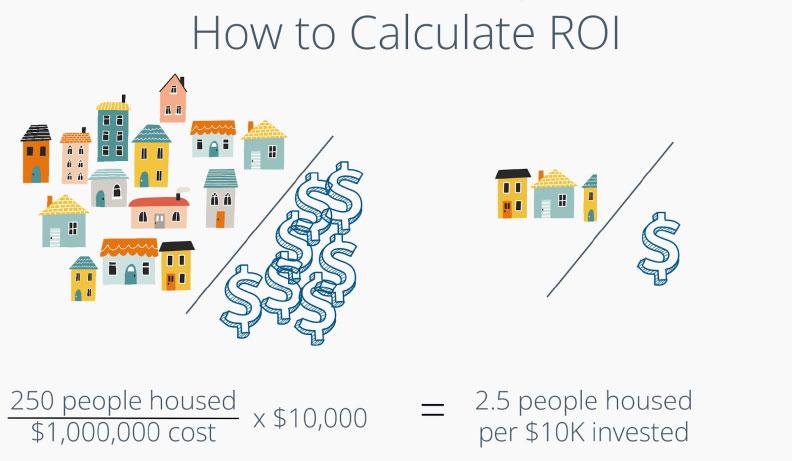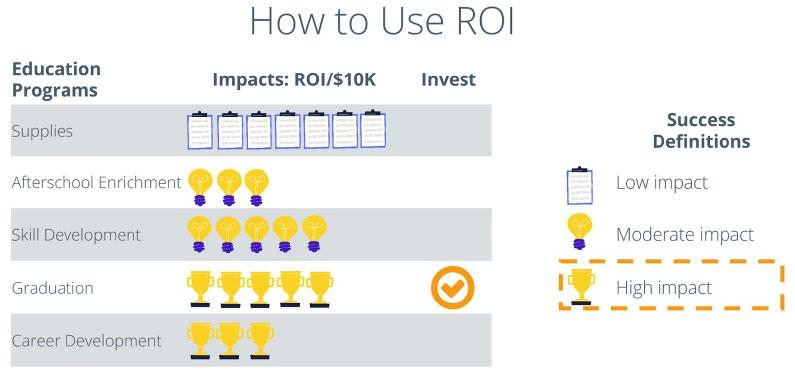Quantifying Your CSR Impact: Go Back to the Basics
The last couple of years have redefined normalcy for most of us. In the corporate social responsibility (CSR) world, funders are more concerned than ever about overburdening their nonprofit partners with reporting requirements. Many are taking a fresh look at equity, or adding an equity lens to their programs. And a number are exploring what it really takes to realize meaningful change in different locations and for different beneficiaries.

As CSR leaders ponder the best ways to measure their programs’ impact, we have good news: whether you’re looking back at 2021 or laying your plans for 2022, there’s no need to reinvent the wheel. Tried-and-true methods of quantifying impact will work in the new CSR environment.
This two-part blog series will cover four steps for measuring your CSR impact as well as provide details on an upcoming webinar: 4 KPIs to Jumpstart CSR Impact Reporting. This first blog includes steps 1 and 2. Checkout the second blog in the series on the True Impact website.
Measuring your CSR Impact
Step 1. Move from Tracking Output to Tracking Outcomes
People often confuse outcomes with outputs. Outputs are the products or services a program delivers and to whom–for example, the number of students mentored, the pounds of food delivered to hungry families, or number of homeless persons receiving shelter.
Outcomes: are the results, with the most important defining the effect on peoples’ lives and wellbeing. Examples of these ultimate or “end” outcomes include the number of students who improve educational performance or get into college, the number of families who gain improved food security, or the number of homeless people who improve their health or safety.
To transition from outputs to end outcomes, try asking, “And then what?”
Output: 100 youths attended a nutrition class your nonprofit partner gave. And then what?
-
The students learned about cooking and growing food. That’s an (interim) outcome, one you’re proud to support, but it doesn’t get at your ultimate goal for investing in this program. So ask yourself again, And then what?
-
They started eating more fruits and vegetables at home. Again, this is a worthy interim outcome, but it’s not your overall reason for investing in this program. So ask again: And then what?
-
Their health improved. That is the ultimate or end outcome behind your support for this program: improved health in this segment of the community.
Why CSR Leaders Should Care About Tracking Outcomes
CSR leaders stepped up during the pandemic and ongoing natural disasters to provide support to their employees and communities in need. When the world has so much constant need, it can feel like a heavy burden to bear. How will you know where to provide support and if you are creating a social impact? If your CSR reporting stops at tracking the inputs and outputs like dollars donated, volunteer hours recorded and charities supported, you’ll fail to answer the question, “why should our stakeholders care?”
Tracking outcomes allows you to create a more authentic (accurate and accountable), more human-centric (instead of process-centric), and more effective narrative to strengthen your relationships with existing and potential employees, customers, business partners, the communities you serve, and other stakeholders that are key to the health of your business. You can develop simple value statements that define your organization’s CSR impact like, “our employee volunteering and company giving in partnership with nonprofit xyz helped place three unemployed veterans into living wage jobs.” Learn more about the importance of impact reporting in this blog.
Step 2. Look at the Social Return on Investment (SROI) of Your Programs
In the private sector, calculating financial return on investment (ROI) — i.e., how much money you will earn for each dollar invested — is a standardized way for comparing the value of one investment against another, to find the best option. The charitable sector offers a similar approach, only instead of calculating the monetary returns for each dollar invested, you calculate the value to society (social impact). Social return on investment (SROI) measures the number of outcomes achieved for each dollar invested.:
Outcome ÷ Cost = SROI
However, since this formula often produces small numbers–for example, 0.01 kids enrolled in college per dollar invested–that can be difficult to explain or relate to, we suggest multiplying the SROI by $10,000 to generate more user friendly results
(Outcome ÷ Cost) x $10,000 = SROI per $10,000 spent
For example, let’s say you invested $1 million in a program that housed 250 people. Using this formula, you would come up with the figure of 2.5 people housed for each $10,000.

This process will allow you to compare the SROI of different outcomes more easily. One caveat: make sure the programs you’re comparing are defining their outcomes in the same way. If not, programs that have easier-to-achieve or superficial outcomes will register higher SROI values, and seem like a better investment than they are. Sometimes simply grouping programs into high, moderate, or low impact categories and then comparing their SROIs is enough to adjust for such discrepancies.

Join us for a Webinar
4 KPIs to Jumpstart CSR Impact Reporting
YourCause and True Impact are partnering together to provide CSR leaders with the tools for measuring outcomes and jump start impact reporting. You want to prove the value of your grants, volunteerism, and other philanthropic activities to the board and other stakeholders. And you want to make investment decisions that move the needle on the causes your company and employees care about. Traditional approaches to measurement and analysis are either too demanding, too expensive, or just too… “so what?”
See how leading Fortune 500 companies are using just four KPIs to maximize their social impact while strengthening (and simplifying!) their reporting to keep key stakeholders happy.
This webinar will include time for live Q&A with customer success experts from the YourCause and True Impact team. The event will be recorded and available on-demand to everyone who registers.